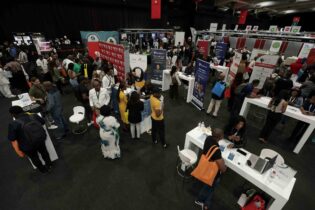Energy has played an enabling role in each of the past industrial revolutions, and the fourth is no different.
But instead of powering factory machinery and steam engines, it is powering everything from communication backbone to access networks, data centres, hyperscale platforms, and the ever-growing types and numbers of powered connected devices that are used to deliver digital applications and services. The capability to deliver efficient, stable, always-available infrastructure and services is a critical component of the 4IR ecosystem. The ICT sector is estimated to consume roughly 7% of the world’s power. As the digital economy expands, this is set to increase to as much 13% over the next five to 10 years. Concerns about the rate of energy consumption by data centres are also mounting, with data centres accounting for close to 2% of global power use according to a European Commission research paper which estimates the CO₂ emissions of data centres to be equal to those of the airline industry at current levels of energy efficiency. The transmission of data from data centres to billions of mobile and wireless connections also adds significantly to the energy consumption. The fact that South Africa faces challenges in meeting current power demand is not news. For years the sector has battled disruptions to its capacity to supply electrical power. Demand is placing increased pressure on capacity, and ageing power plants and power transmission equipment mean that an effective solution will require not only creating additional capacity but also making sure that existing capacity is sustained and used more efficiently.The energy challenge has contributed to rising electricity prices, which has had a significant impact on the input costs of delivering telecommunication services. Load-shedding has also had adverse effects on the ability to deliver services.
While we are looking at ways to diversify the energy mix, currently none of the alternative energies on their own are enough to meet the demands; on-grid coal-based supply continues to dominate. This is why smart grids, with their ability to optimise a mix of energy sources, have been welcomed as a sustainable solution to the power supply challenge. As a provider of infrastructure, DFA has invested considerably in a multilayered, robust, and reliable business-continuity approach to address our needs for reliable power supply. One of the key initiatives is the investment in clean renewable energy and they have invested significantly in solar power in their main network operations centre. DFA is looking more and more at incorporating energy alternatives into their operations to do their part in alleviating the pressure on the grid and to secure the energy requirements of our network for the future. As the ICT sector focuses on the technology that will help to realize South Africa and the continent’s 4IR ambitions, attention should also be given to our energy sector to ensure that we have the required power resources to sustain it. While the challenges are not insurmountable, they could hamper our 4IR efforts if we don’t address them in good time.







